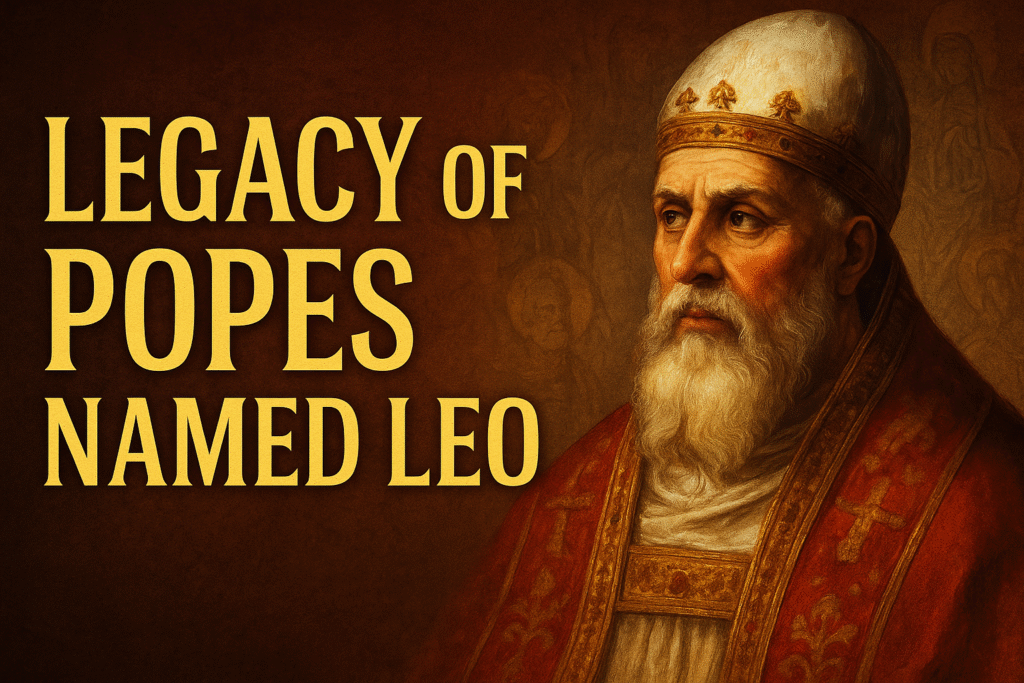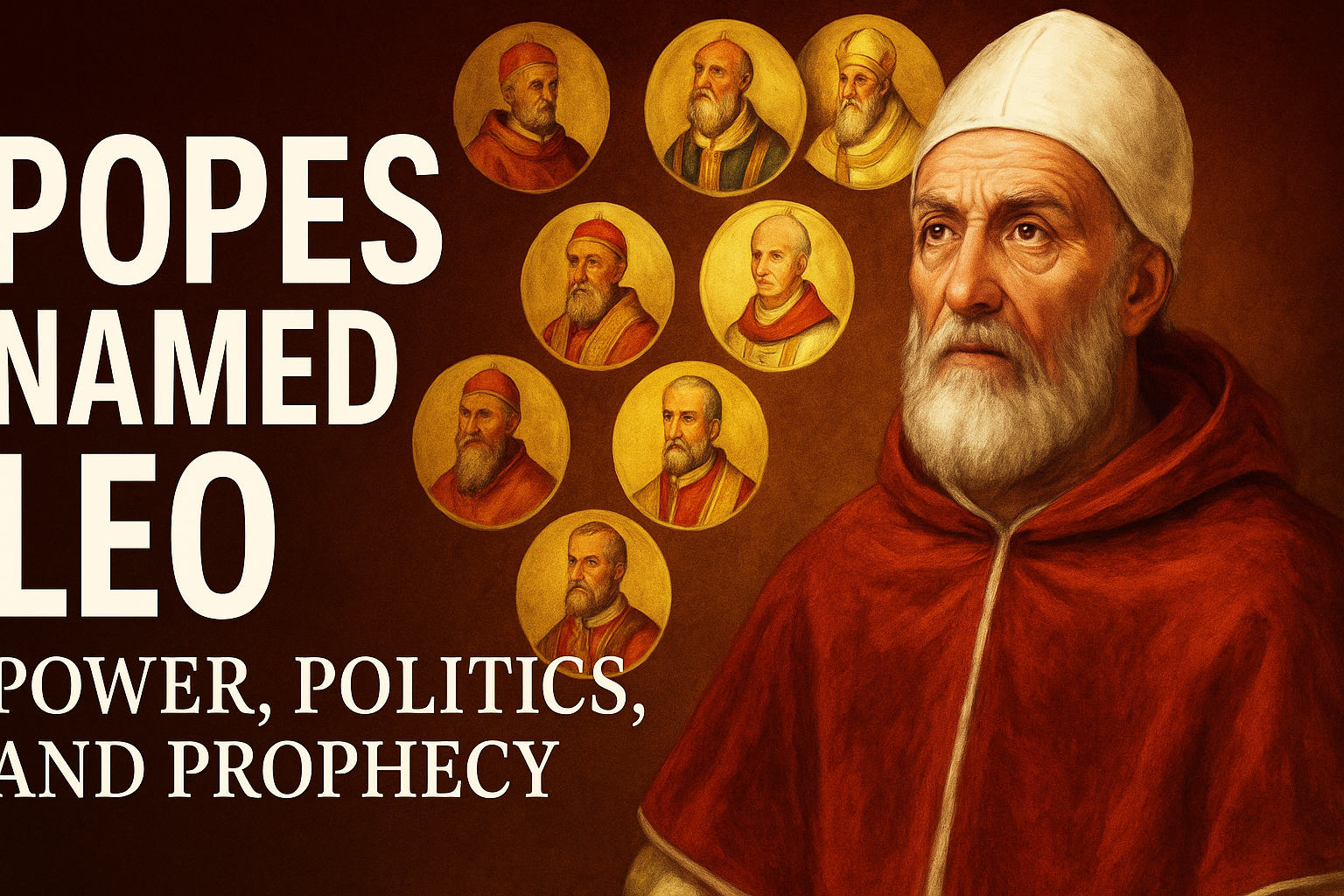
From Saint Leo the Great to the newly elected Pope Leo the Fourteenth, fourteen men have worn the name Leo upon the throne of Saint Peter. More than a title, this name has become a powerful symbol of courage, wisdom, and prophetic strength throughout Catholic history.
In this article, we explore the story of each Pope Leo—some canonized saints, others caught in history’s shadows. Each left a distinct mark on the Church, and together, they form a narrative of power, reform, and spiritual authority that still resonates today.
Introduction: Why the Name “Leo”?
In Catholic tradition, the name chosen by a pope often reflects his spiritual mission and historical inspiration. The name Leo evokes courage, authority, and fidelity to the Gospel. It’s no surprise that so many pontiffs have chosen it across the centuries.
Saint Leo the Great: The First and the Greatest
Elected in the year four hundred forty, Saint Leo the Great faced both internal heresies and external threats with boldness and theological clarity. He famously met Attila the Hun face-to-face and turned him away from Rome—not with swords, but with faith. At the Council of Chalcedon, his teachings on Christ’s two natures were received with the words: “Peter has spoken through Leo.”
Leo II to Leo IV: Defenders of the Faith and the City
– Leo II (682–683) confirmed the Council of Constantinople and defended orthodoxy with clarity.
– Leo III (795–816) crowned Charlemagne as emperor, restoring the Western Roman Empire and strengthening the papacy.
– Leo IV (847–855) fortified Vatican Hill and led Christian forces to victory at the Battle of Ostia.
The Forgotten Leos: Papal Shadows
Some Popes named Leo are scarcely remembered:
– Leo V (903) reigned for only a few weeks before being deposed.
– Leo VI (928–929) was appointed by Roman nobility and ruled during political instability.
– Leo VII (936–939) supported monastic reform and maintained fragile peace.
– Leo VIII (963–965) was elected under imperial influence and remains a disputed figure in Church history.
Leo IX: On the Edge of the Schism
Leo IX (1049–1054) was a reformer who fought simony and moral decay. But his mission to heal East-West tensions ended in tragedy, as his legate excommunicated the Patriarch of Constantinople—marking the beginning of the Great Schism.
Leo X: Beauty and Controversy
Leo X (1513–1521), of the Medici family, brought Renaissance grandeur to the Vatican. He supported artists like Raphael and Michelangelo, believing sacred beauty could glorify God. But indulgences used to fund Saint Peter’s Basilica were misunderstood and abused by some, fueling Martin Luther’s rebellion. Leo excommunicated him, but the split had already begun.
Leo XI to XIII: Challenge and Renewal
– Leo XI (1605) reigned only twenty-six days—known as the “Lightning Pope.”
– Leo XII (1823–1829) sought to restore morality and ecclesial discipline in a secular age.
– Leo XIII (1878–1903), philosopher and diplomat, authored Rerum Novarum, founding Catholic social teaching. He promoted the Rosary and engaged constructively with modern society.
Leo XIV: A New Beginning
Leo XIV, elected in 2025, is the first American-born pope. With a background in missionary work and pastoral ministry, he brings fresh energy to the papacy. His choice of name signals continuity with past Leos—a call to courage, truth, and renewal in the face of global challenges.
Conclusion: The Roar of Faith
Each Pope Leo met the needs of his time with what he had—faith, wisdom, courage, or silence. Together, they form a powerful chain in the history of the Church. The name Leo means lion—and each of them roared in his own way.
With Pope Leo XIV, that roar rises again. May we accompany his papacy with prayer, hope, and trust in the Holy Spirit.
Connect with Us!
Explore more Catholic content and support our mission:


The history of the Popes named Leo is truly fascinating, showcasing their diverse contributions to the Church and the world. From Saint Leo the Great’s courage to Leo X’s patronage of the arts, each pontiff left a unique legacy. It’s remarkable how the name Leo has symbolized strength and leadership across centuries. The challenges they faced, from heresies to schisms, highlight the complexity of their roles. How do you think the legacy of these Popes continues to influence the Catholic Church today? WordAiApi